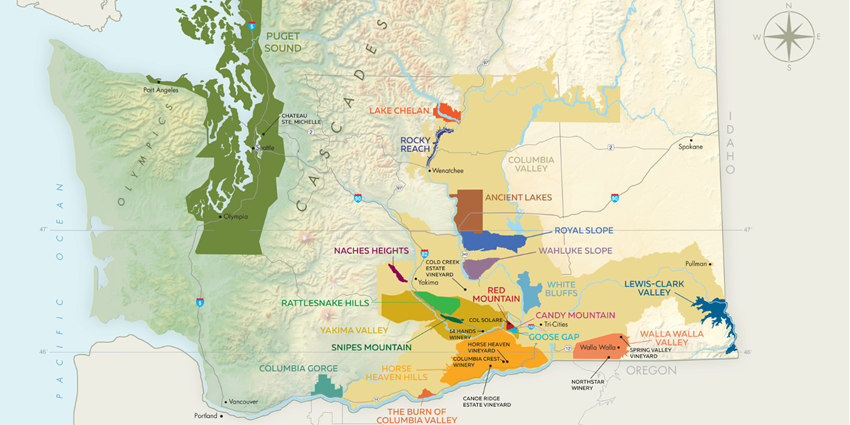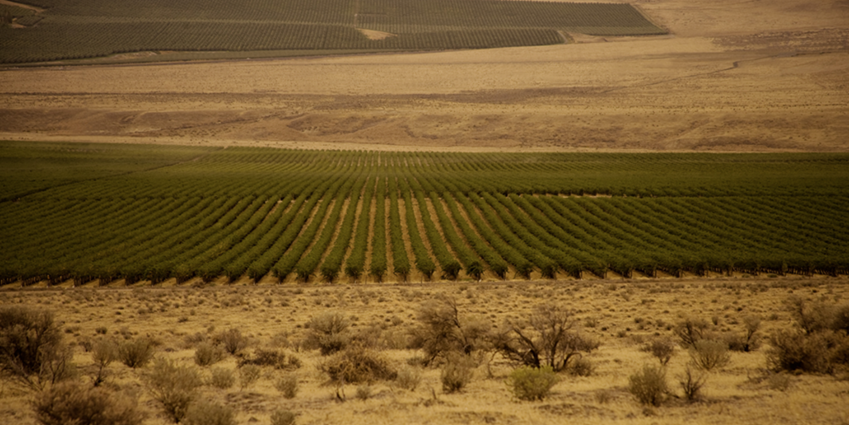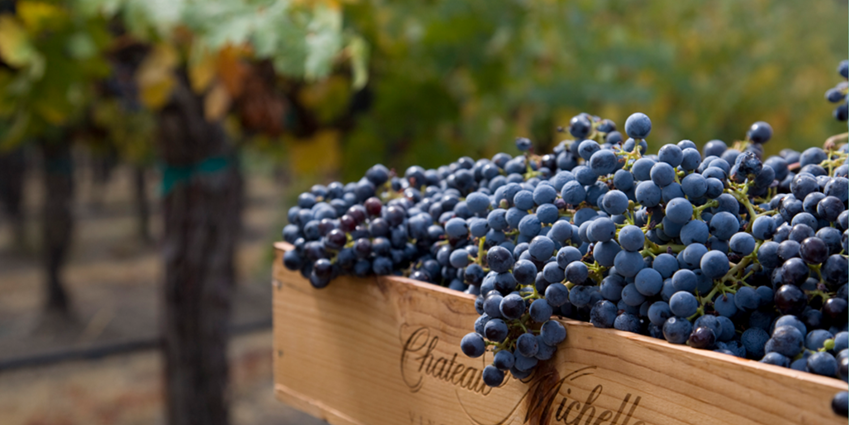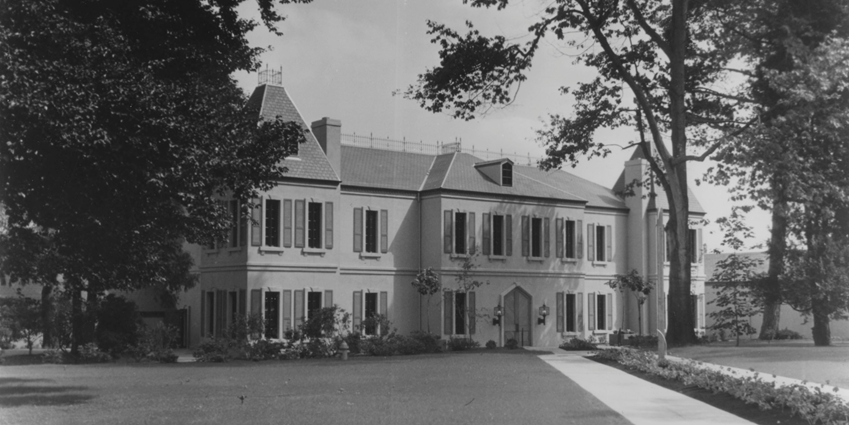Discover Columbia Valley with Chateau Ste. Michelle
There are few wine regions in the world, where all the elements seem to come together to work fully in favour of the vines. Any exceptional trait of the terroir is often a trade-off for at least one ominous elemental threat, riddling viticulturalists and winemakers alike with seasonal angst. Why is it our most desired soils find themselves in our most challenging climates?
But then sometimes, somehow, it seems everything wants to work in the vines’ favour. The Columbia Valley in Washington State has become an unexpected winemaking oasis, only a few hundred kilometres away from the notoriously rainy Seattle. Sitting east of the Cascade Mountains, the American Viticultural Area (AVA) is sheltered from the relentless rain that hits the state’s coastal cities. Appearing dry and baron, the valley at first feels inhospitable – certainly not a place for things to grow, let alone thrive? Well, you won’t find any farmers for hundreds of miles; but a horticulturalist’s nightmare, can be a viticulturist's absolute dreamboat.
We are discovering what makes the AVA of Columbia Valley in Washington state ideal for sustainable viticulture and why it has become one of the most exciting New World regions to have on your wine radar.

Naturally, sustainable winemaking
As a rule of thumb in wine, the less you have to do the better. Wouldn't it be nice if everything just worked, and the grapes could just do their thing? In the case of The Columbia Valley, viticulturists and winemakers are fortunate enough for this to largely be the case.
The first secret to success is simply the sun. The onslaught of rain that hits Seattle is blocked by the Cascade Mountains, leaving the Columbia Valley with an average of 300 days of sunshine a year. There is no rain during harvest, rendering common issues like mildew and pests non-existent. The cold winters in the valley then send the vines into full dormancy, not giving pests or disease even the slightest chance of survival. These dry conditions make for bone-dry, sandy soil, which makes it essentially impossible for Phylloxera to spread. For this reason, almost all the vines are grown on their own rootstock. Chemical-free viticulture is second nature to growers in the Columbia Valley, as they have never had to be concerned with hosing down vines with chemicals to keep nasties away.
Vines are fed water through careful drip irrigation with water from the vast Columbia River. Control over the water supply means vine vigour is in the hands of the viticulturist allowing for greater expression of the grapes’ characteristics. It is in the vines’ best interests for the viticulturists to use less water, so the impact of on the river’s water supply is minimal.

The growing season in The Columbia Valley
Sitting at a latitude of 46°, the same as Burgundy across the pond, there is a large diurnal shift, meaning the vineyards enjoy long hot days and very cold nights. This gives the fruit rich intensity and a naturally high acidity. The growing season starts a little later, but at its height it is intense, then there is an extended finish and cooler harvest.
As a young region with such ideal growing conditions, the main challenge facing the AVA is identifying its hero grape. When experimenting with varieties over the years, there weren’t really any that did not take to the terroir. It is one of the few regions in the world where it is common practice to have multi-grape vineyards. But naturally, there will always be favourites. Riesling, a variety that vividly reflects the character of the terroir, has been enthusiastically embraced by winemakers. The region’s take on the variety began earning acclaim in 1974, when Chateau Ste. Michelle won a blind tasting in Los Angeles for one of their early vintages.

Chateau Ste. Michelle
Chateau Ste. Michelle is credited for discovering Columbia Valley as a wine region after building the estate in 1912. Today the estate is the leading winery in Washington, with vineyards spanning 1416ha of the valley.
After untapping the potential of the terroir, it wasn’t long before word of their wines and the region’s potential reached the greats of the Old World. Tuscany’s own Marchese Piero Antinori collaborated with the estate to see how a Super-Tuscan-style Cabernet Sauvignon would take to the terroir, with Col Solare. Then Ernst Loosen soon jumped across to see how a German-style Riesling would fare, with Eroica wines.
The diversity of their range speaks to the diversity of the region and shows the quality of the fruit which gives their wines the richness and opulence of the New World, while the winemaking skills behind each bottle provides elegance and finesse.

The wines:
Chateau Ste. Michelle, Columbia Valley Merlot
This wine is crafted to be a complex yet approachable Merlot. The wine offers aromas of black cherry, leather, and spice with layers of rich dark red fruit flavours and a long, smooth, sweet finish. A touch of Syrah adds a jammy fruit character. A great “everyday” red.
Chateau Ste. Michelle, Cold Creek Cabernet
One of Washington’s oldest and most acclaimed vineyards. Character builds season after season in the growth rings of the old woody vines. Sun-drenched growing conditions with low rainfall results in small berries with full-bodied flavours. This Cabernet has broad-shouldered structure, concentrated fruit characters and deep colour.
Eroica Riesling
This wine showcases the elegant purity of a great Riesling. Sourced from cool climate vineyards, Eroica shows exuberant freshness with inviting stone fruit, citrus, and floral notes. Drink now to experience the youthful charm or age this wine for added complexity.






